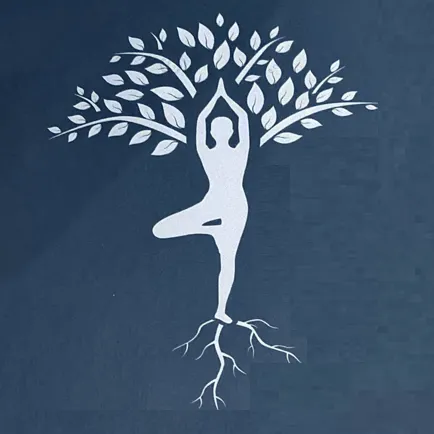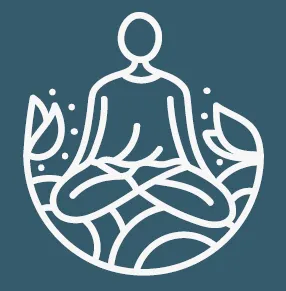Blogs
Written by Elke Hottentot

What is yoga?
What is yoga: origins and evolution
Yoga: etymology and evolution
The term ‘yoga’ comes from the Sanskrit word ‘yuj’, which literally means to unite or to join. It can be understood as the union between of body with mind, mind with soul. But, what is yoga? Where does it come from? The first question cannot be answered without a consideration of the historical context, as with the changing of time, the understanding of yoga has transformed as well. The first traces go back as far as 3000 years BC[1]. Since then, the understanding of yoga has evolved as documented in various important texts, starting with the four Vedas between around 1300 and 600 BC; the Vedic period. This was followed by the pre-classical yoga period, during which the 12 Major Upanishads were written. These described “the inner vision of reality resulting from devotion to Brahman”[2] and provided a first definition of yoga described in the Katha Upanishad:
“When the five senses are stilled, when the mind is stilled,
That is called the highest state by the wise.
They say yoga is this complete stillness in which one enters the unitive state,
Never to become separate again.
If one is not established in this state, the sense of unity will come and go.”[3]
The Upanishads are revealed texts, also called ‘shruti’, (literally ‘heard’[4]), “owning its authority not to other scriptures but to the fact that it set down the direct mystical experiences of a single author.”[5] The Upanishads form part of a monist system of thinking which sees God as one, even though it knows many forms, there is only one reality. In the Upanishads, this oneness can be found by turning inward, specifically, by exploring consciousness itself, by searching the divine within. In general, those traditions considered shruti tend to date back to earlier times and are considered more sacred that the smriti.
The next evolution in the understanding of yoga also took place in the pre-classical period, namely between 500 and 200 BC with the Mahabharata, Ramayana and Bhagavad-gītā. Around 600 BC and 200 AD, Yoga was defined as one of the six classical darsana, ‘points of view’ on life, of Hindu philosophy. During this time, the Samkhya was written, which is based on dualism involving the ultimate principles of soul (purusha) and potential matter (prakriti). A total of six darsana are paired, with the Samkhya and Yoga being one of those pairs.
The following period, titled the classical period, is marked by Patañjali expounding the Yoga Sutras between 200 BC and 200 AD. The Sutras interpret the Samkhya and offer practical guidance on how to arrive at samadhi.
The following evolutionary step in the long life of yoga took place in the so-called post-classical period, around the 3rd to 10th century AD. This period contrasts the yoga of other time periods because of its teachings. In post-classical yoga, “yogis were taught to welcome reality rather than stray from it, and live in the present.”[6] Furthermore, this period aimed to affirm “the unity of everything.”[7] During this period, the Yoga Upanishads were written and tantrism emerged, a devoutly non-dualistic system.
Modern history of yoga is marked by its arrival in the West in the late 1800s. This can be attributed to many gurus, only one of which I will name here, namely Swami Vivekananda, a student of Ramakrishna. He was commissioned to attend the 1893 Parliament of Religions in Chicago. His speech left a deep impression on the audience.[8]
Since, yoga has undergone amazing transformations with the development of an amazing diversity in types of yoga, each one embracing a different angle of this same age-old practice. As such, there are now many different schools of yoga, ranging from Bikram Yoga, Annusara Yoga, Iyengar Yoga, Ashtanga or power yoga, to name only a few.
Yoga as a goal and as a journey
Yoga as in the union of body and mind, and mind and soul, is both a journey and an end destination. It is a journey, as one does not arrive at this state of integration in one step; it requires devout practice as stated by Patañjali in Yoga Sutra chapter I, aphorism 12, “the end of habitual thought is obtained by an intense practice in a spirit of detachment.”[9] This journey can be taken according to the various interpretations of Yoga. If practicing Patañjali’s yoga - also referred to as the eight limbed path of yoga – one will find guidance in the Yoga Sutras, beginning with the aspiration to adhere to the yama and niyama, followed by āsana, prānāyāma, pratyara, dharana and samadhi. If one, however, follows the tantric approach, a different path is laid out, one which refuses nothing and is profoundly practical in nature. And, as I discuss in answer to the question 3 a, the Bhagavad-gītā proposes three, even four, different paths, or margas, namely that of jnana yoga – the yoga of knowledge, bhakti yoga – the yoga of devotion, karma yoga – the yoga of selfless action, and raja yoga – the yoga of meditation.[10] As should be clear, yoga offers something to every spiritual aspirant and as such, the journey of yoga can be travelled according to which tradition one feels most at home with.
Yoga is also a destination by itself. Here I once again refer to Patañjali’s Sutras with a free translation of aphorism two in chapter I: “Yoga is the end of the automatic activity of the mind.”[11] Then, there will be union of body, mind and soul. This sutra is of great significance when studying yoga, as with it, Patañjali captures the essence of yoga as being more than an end goal or a journey. If one is truly able to live this sutra on a daily basis, then one understands everything there is to understand about yoga. Then, and only then, will one not need the other sutras.
What are the accomplishments we may experience as a result of a dedicated yoga practice? Personally, the foremost would be the lessening of suffering; a greater sense of joy and lightness, of simplicity, clarity and peace, at a personal level. When accomplished, the effects will extend beyond the accomplished person, to all of those s/he comes in contact with.
[1] Merriam-Webster's Encyclopedia of World Religions (2000), Merriam Webster, London: “Perhaps the best-known artifacts of the Indus civilization are a number of small seals, generally made of steatite depicting a wide variety of animals. Sometimes human forms are included. One such form included a human figure seated in lotus posture”, p. 504.
[2] http://www.abc-of-yoga.com/beginnersguide/yogahistory.asp, May 4 2012.
[3] Easwaran, E. (2007). Nilgiri Press, Tomales. The Upanishads, Part II, Chapter III, verse 10 – 11, p. 91.
[4] Easwaran, E. (2010). Nilgiri Press, Tomales, The Bhagavad Gita, p. 13.
[5] Idem, p. 18.
[6] A history lesson in yoga. http://www.thesecretsofyoga.com/yoga-articles/History-Lesson-in-Yoga.html, May 4 2012.
[7] History of yoga. http://www.yogaweb.com/yoga/essentials/history.asp, May 4 2012.
[8] Idem.
[9] Free translation from French into English of Blitz, G. (1991): Albin Michel, Paris, Yoga. Sutras Patanjali, p. 28.
[10] Easwaran, E. (2010). Nilgiri Press, Tomales, The Bhagavad Gita.
[11] Idem, p. 20.






